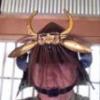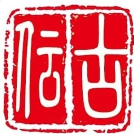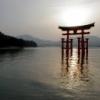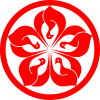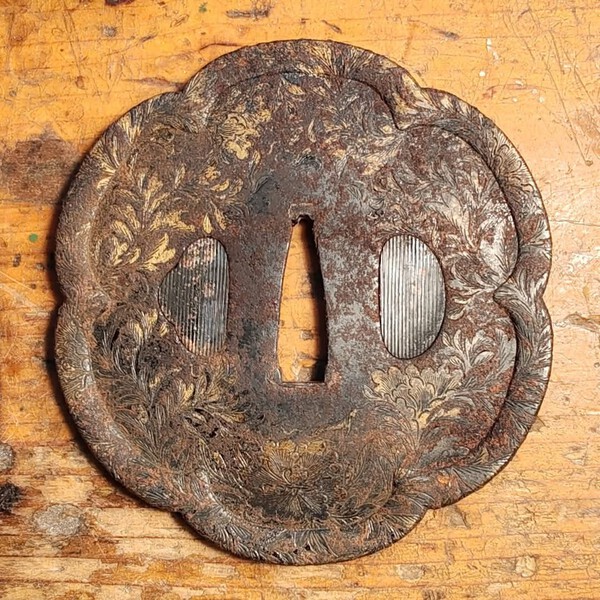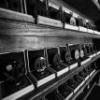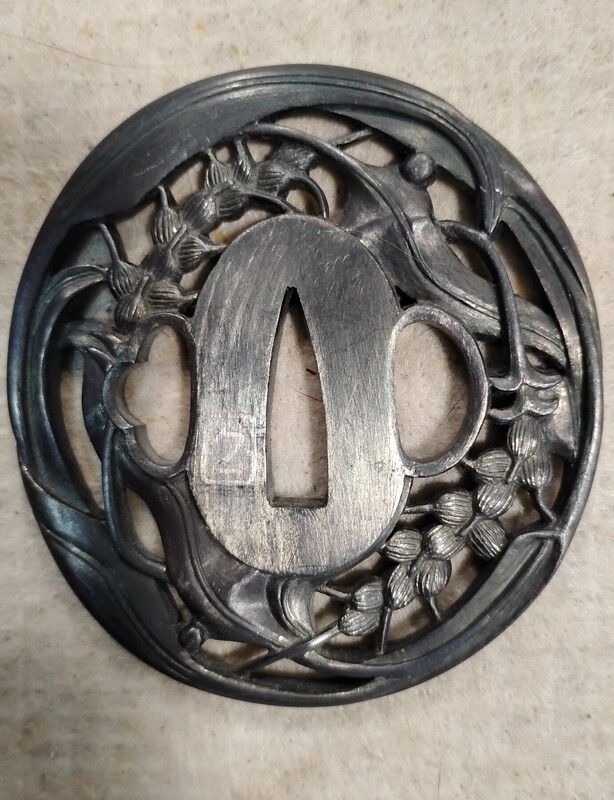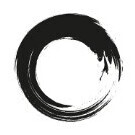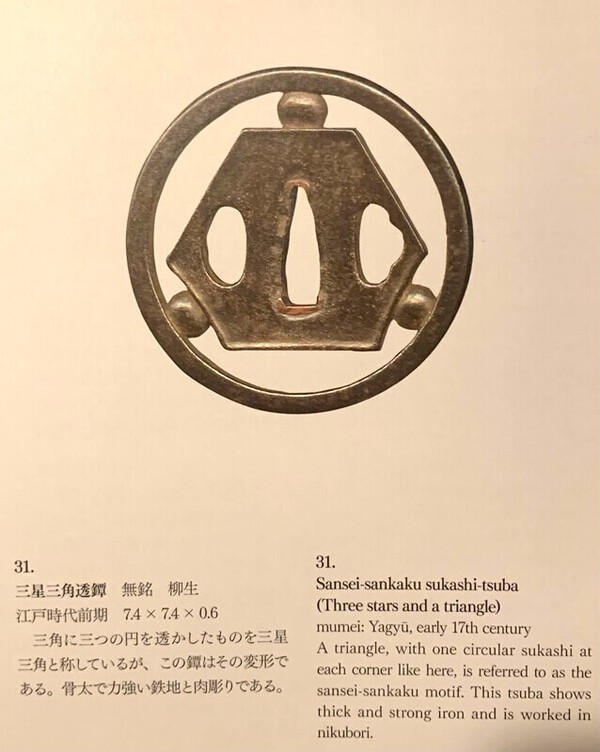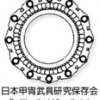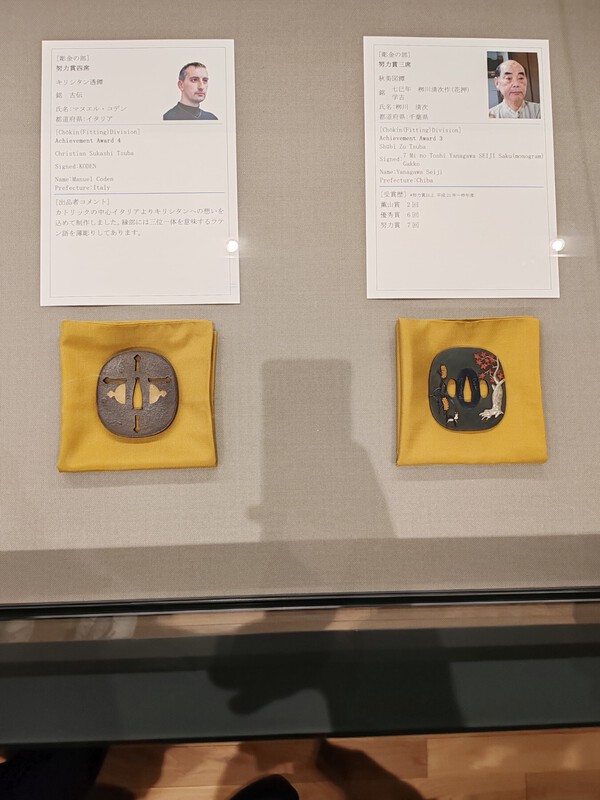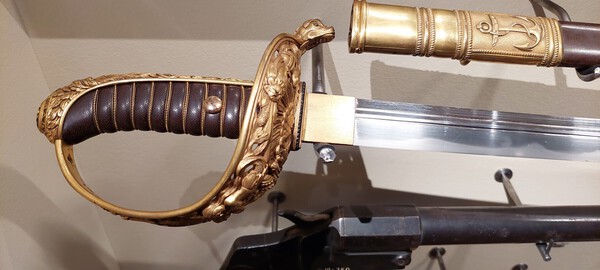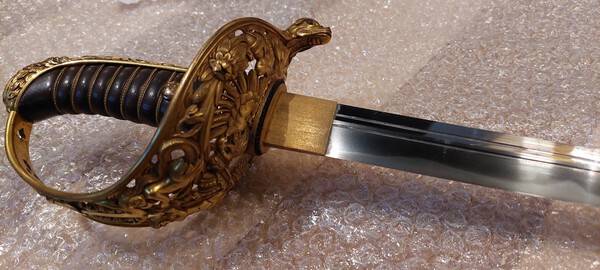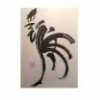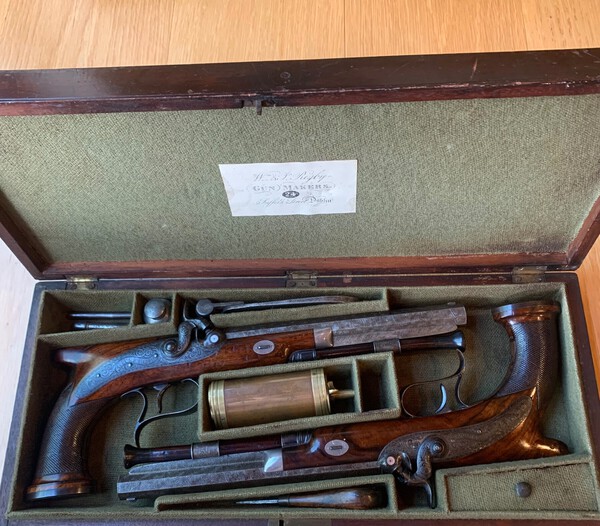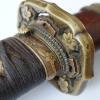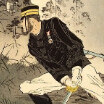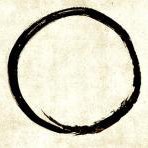Leaderboard
Popular Content
Showing content with the highest reputation since 09/13/2024 in Posts
-
Well as I was travelling in Japan this summer I realized I should share the current data I have, because if something happens to me all my long time work is lost. There have been some unexpected passings in the last few years and I have been gathering the data for this file for around 10 years now and it would be shame to lose it all. This is still a work in progress and there is even tiny bit of Finnish language mixed in there. This will never be finished and I will continue to work this hopefully for a long long time. As I managed to pass 15,000 swords in the file I thought it would be time to share it. I am strong supporter of openly sharing the knowledge, so feel free to use this for research, just would be nice to be credited if this is used in research. My original idea was to stop around c.1450, and I mostly did. However I wanted to include some Muromachi stuff I like and old ōdachi in general, and few years ago I started adding late Muromachi and early Edo Naginata to the list. So I think the number of pre 1450 swords might be closer to 14,000. Of course would be amazing to have all swords included but as a solo project just stopping around Early-mid Muromachi has proven to take majority of my sword hobby time. There are most likely some errors somewhere in there and I correct then always when I notice them. It is just due to human error as this is my solo project and 15,000 sword entries there are bound to be errors, and there are still many items that might have XX etc. that I need to do more research. I have included reference for each and every sword, so I do have all 15,000+ swords in my personal references. I have been using this my personal reference system for a long time so for me it is easy. I am always updating this when I have time but I think I have 1000+ written references at home as I have c.800 issues of Tōken Bijutsu. For a long time I have tried to find motivation to finish seeking all the City Bunkazai from city websites but so far I have only gone through 187 cities and I think there are 700+ in Japan. The reference system might be bit confusing but at the bottom I should have quite up to date list of the reference codes I use. Few years ago I started adding additional information and attachments. I should have started it from the beginning as I need to go through references multiple times now. It is still a work in progress but for example additional info I should have around 300 Meitō, I think there should be provenance (denrai) for 1300+ swords currently. Maybe c. 150 shrine dedications etc. For attachment example I should have info on close to 1,500 sayagaki. Just looked and I think I should have c. 400 Tanobe sensei sayagaki. Listed as authentication I should have around 2,500 Hozon & Tokubetsu Hozon papers for these swords. I know there should be 3,000+ but many Japanese dealers never post the NBTHK papers. If I know the location of the sword (museum, shrine etc.) I have written it in authentication field along with the designation of the sword if it has such. I had a huge dream of a website and I had an amazing vision in mind but unfortunately reality hit that I could never achieve that, and on top of that copyright issues would hit hard. As I said I have every item somewhat accessible to myself however I cannot really share them to public. I try to be up to date with current information where smiths belong etc. and try to switch them around. However it is difficult as new theories emerge from Japan. I just read recently that in one view Ōmiya Morikage is now considered to be Osafune smith instead of Ōmiya, and just few years ago I switched Yoshikage from Sōden-Bizen to Ōmiya, maybe I need to do more switching... so some smiths might be in wrong school, or there can be alternating theories. In my defence I have all the references where I can check but there can be conflicting information among the references. Unless the item is dated I have tried to give a decent time range for the smith as I dislike very narrow ranges for mumei items. Some references can narrow the dating of mumei sword to very narrow time frame and therefore I have written what they see the item being. As for me size and shape is the most important thing for me it was logical to arrange the items by length first and foremost. So if present the swords should go ōdachi - tachi - katana - naginata - naoshi - kodachi - wakizashi - tantō - ken/yari. Then for same length I have usually gone higher ranked first (at least that was my plan). Well that is a brief summary of the database file. I hope everyone will have a great summer Koto tietokanta PDF15000.pdf44 points
-
Dear All I hope this finds everyone doing well? 48 hours ago I was greeted with the wondaful news that the NBTHK Japan has given us permission to share the English Versions of the NBTHK magazines from series #1 to #58 (ONLY) here on the NMB for educational purposes. Conditions are: - The Magazines cannot be sold to the public or board members. They must remain as free educational material. No profiting under any circumstances. - There must be a stable record of how many members are downloading the magazines (we already track the download numbers) - These are for the English magazines from the late 1970's and only numbers 1 - 58. - The NBTHK Japan must be acknowledged as the original publishers. This has been weeks in the making with 2 close contacts in Japan lobbying on our behalf and they really have come through for us so I have a lot of making up to do for them when I am next in Japan. I shall send everything to @Brian and allow him to upload them when he has time. Thank you for your patience everyone and I hope that the materials will help your education and collecting journey as much as it has helped so many in the past.42 points
-
I'm proud to announce that my Kirishitan tsuba got awarded the 4th Effort Award in this year's NBTHK contest! This is an incredible reward for my hard work on improving my skills. To my knowledge i'm the only foreigner to win an award in this category for NBTHK competitions ( Ford Hallam only achieved Nyusen before moving to NBSK). My work will be featured in the catalogue and the exhibition, so please take a look if you have the chance. Following there are the pictures and a link to a video that shows the special feature of the mimi Link to the video https://drive.google.com/file/d/15HyBoEufhpyEx98n4Y9BETWOtrMtt5o6/view?usp=drive_link34 points
-
Per request from the Dai Token Ichi thread, here are photos of the blade I bought last November at the DTI from Tsuruginoya. It is a Fukuoka Ichimonji Chikafusa that has reached NBTHK Juyo Token. I apologize for my poor photo abilities. Capturing the intricacies of this blade is very difficult. To partially make up for that, here’s what Tanobe sensei said on the sayagaki (credit to @SteveM for the translation): Designated Important Sword (Jūyō) at the 67th Jūyō Session Bizen-no-kuni Fukuoka Ichimonji Chikafusa Shortened a bit (machi-okuri), with a two-character name purposefully inscribed with a thick chisel into the tang which has been slightly cut off. The sword has a dignified shape, with a standard width, a deep koshi-zori, and the tip of the sword ending in inokubi style. The forging pattern is koitame, with a clear midare utsuri present, and a lustrous chōji midare with “fukuro chōji” showing as double-chōji in the hamon. There are ashi and yo in abundance, giving great beauty and a rich variety. This sword displays the elements of this school at its peak in the mid-Kamakura era. There are several swordsmiths with this name appearing in the indexes, which dates this sword circa Kenchō (1249-1256). This excellent sword is both a classic example of this school, as well as an outstanding item. Length 2 shaku, 3 sun, 2 bu (70.30cm) An auspicious day in November, 2024 Recorded by Tanzan (monogram) Interestingly, the NBTHK Juyo setsumei says, in part: “According to the swordsmith indexes, Chikafusa was a Fukuoka Ichimonji swordsmith, circa Jōkyū (1219-1222).” So there is a slight difference of opinion on which Chikafusa made this blade. In any event, I am quite happy with it. It was registered March 13, 1951.34 points
-
There are questions about collecting that come up (or worse do not come up but are present) which are, unfortunately, not covered in any of the books. So I wrote a guide which answers at least some of them: papers, polish, etc.. It is a directly phrased document which I am planning to put it in my signature since unfortunately I don't have time anymore to manage my website. cert.pdf33 points
-
As most of you know, I've been recovering from 2 surgeries for a perianal (embarrassing area) abscess that spread rapidly and they had to slice and dice me to remove necrotic tissue. Spent 8 days in hospital, and have been recovering at home the last 10. Slow recovery that makes sitting, standing and walking very difficult. At the same time I (finally) got diagnosed with Type 2 diabetes. I always pretty much knew I had it, but was stupid enough to wait for them to tell me. Anyways, it just makes everything more difficult, but I'll deal with it ok and am just lumping it into everything. That said, I think I am making some progress. Likely will be off until early Jan, and haven't been able to participate here as much as usual. But am monitoring and following everything. So...A big thanks to you guys for generally behaving yourselves and have seen some fascinating discussion, lots of sales and lots of good info and translations. I appreciate you guys removing some of the stress I anticipated, and am really happy with the way things carry on without micro managing. At the same time, I really do have to send a HUGE thanks to those of you who have supported the forum by renewing Gold memberships or sending some contributions for sales done etc. I was a little stressed about paying fees etc while I was laid up, but you supporters have really pulled though for me and taken a lot of that stress too. We have some great members here, and a bunch of new faces too, giving good questions and answers. And of course the old faces that are the heart of the forum that maintain the flow and strength of this place. So whether you didn't even know about the health issues and just carried on as you usually do, or whether you just participate with questions, answers or discussion, or whether you have supported us with subscriptions or donations..or whether you just lurk and read the forum....a huge thanks to you all. This is as good a time as any to wish you all a wonderful Festive Season and a prosperous New Year. Thanks to all of you, even the instigators who (in their own way) stoke debate and analysis. I'm here, just taking it slow and steady. Best to all. - B -32 points
-
A friend picked this up for me from Itoh-san at the San Fransisco Show. I originally saw it in Chicago in April and have been lusting after it ever since. I've previously purchased a piece by the 5th Master Shigenaga, but this is the first piece by an earlier Jingo smith that I have ever owned. Love the plate and the treatment of the iron. Was included in the 2013 NBTHK Kurogane no Hana exhibition, and has variously been attributed to the 2nd and 3rd Master. (Second by NBTHK and 3rd by Itoh-san.) Love the whole package and hope you all do as well. Hope you enjoy and thanks for looking!29 points
-
Greetings to All, Recently, I acquired a rather rusty tsuba as part of a deal for a Washida tsuba with another collector. This piece was thrown into the arrangement by the seller to meet the requested price range. Despite its condition, it showed some promise. The tsuba is signed Kyozan Mitsunaka + (Kao) ({嚮山 光中(花押)}) in kin-zogan. Based on the pictures, it appeared to feature brass hira-zogan of peonies and arabesques. Despite the rust, none of the inlays seemed to be missing - testament to the craftsmanship. The subject and execution also align well with works by Washida Mitsunaka or the Washida school. Seeing its potential, I decided to accept the deal, and both tsuba landed on my desk. Believing the piece was worth restoring, I sent it to Manuel @C0D for restoration, and I wasn't disappointed. Manuel did an outstanding job removing the rust and re-patinating the brass. If Manuel would like to elaborate on the restoration process, I would welcome it. The gamble paid off, as the final result is quite pleasing. As you can see, the tsuba has been brought back to life: I hope you enjoy it as much as I do. Regards, Luca P.S. I have to thank Manuel for allowing me to use the pictures he made.28 points
-
28 points
-
Hello everyone, Thank you for the positive support on the first article, I sincerely appreciate it. I've decided to test the waters and gauge interest in a series of in-depth articles on the grandmasters of Nihonto. This ties into a contentious question which is endlessly engaging for enthusiasts. Who was the greatest maker of Japanese swords in history? Of course, there are many valid answers to this question, but reaching an informed perspective requires knowledge. Much of that knowledge is rather arcane and not readily available in the West. As for the format, it's an attempt to strike a delicate balance between casual storytelling and academic rigor. As you can imagine, collecting data and sources for these articles is a tremendous effort, and this work wouldn't have been possible without the invaluable help of many friends in the field. You know who you are, thank you. I'll be refining the format over time, so if you find it borderline impenetrable or confusing, please let me know, and I'll tune the style going forward. This is a first draft, and I plan to keep it as a living document, updating it as needed. If you have high-quality material on Mitsutada blades—such as beautiful photos—to share and enrich the article, feel free to send me a PM. I'll be sure to credit you as the source. In the same spirit, there are bound to be mistakes that need corrections, along with typos and the like. Any help with polishing is most welcome. Here's the article: https://nihontology.substack.com/p/grandmaster-mitsutada If you're genuinely interested, share with friends in the hobby and encourage them to subscribe, it will encourage me to move forward with this work! I sincerely hope you enjoy reading it as much as I enjoyed researching, Hoshi26 points
-
Excellent blogs by other people, first and foremost Markus, have inspired me to being releasing a newsletter. Three topics each issue, each something not well covered by books. In this one you can find articles about: Kyushu nihonto Saiha and yakinaoshi - same of different? The true meaning of NTHK scores https://www.historyswords.com/news1.pdf25 points
-
Relief!!!! All is ok, I have confirmation it is a case of severe technical issues!! @Spartancrest will be back in due course!! My mind is at ease, really been missing Dale!!24 points
-
Here are some phone pics of my latest work, this is my 4th attempt at making tsuba. The bronze original is in the V&A London online collection. The details are as follows. The project took 7 months to complete including choosing the design to inlay of the mei. The material is iron(not mild steel) I sent some 100 year old relic parker brothers and other Damascus shotgun barrels to a blacksmith who returned them as 1/4" iron plate. I made a pen and ink drawing adding the kogai hitsu ana. The design was xerox copied and transferred to the plate. I then pieced with a jewelry saw and sculpted with hammer and chisel gravers. Polished with files and finishing stones. The color is heat blue patina.24 points
-
What follows is simply a different view on how and why to get into this collecting field. It is based on my experience and is purely my opinion. Just some random musings. 1.Before you dive in understand how the market is structured (it’s exactly the same as any other collecting market) Imagine a pyramid, wide at the base, pointed at the top. At the base there are a great many collectors interested in a wide range of swords for many different personal and aspirational reasons. These will usually be the more modestly priced swords but that does NOT MEAN THEY ARE CRAP. As you gradually look higher up the marketplace pyramid you will find the numerical customer base quickly reduces the higher you ascend and as the price of the swords increases. At the top of the pyramid you will find a vastly reduced customer base able (and willing) to spend large sums of money on the rarest of swords. This is pretty obvious stuff but the new collector should now start to think about where they might envisage themselves ending up. What are their aspirations (because they will vary enormously) What are they aiming for? Above all, what is realistic. 2. Ask yourself why are you joining this hobby? What do you want to collect because there is a great variety…..and remember it’s your decision, no-one should attempt to tell you what to do. This is your collection, your hobby. Military stuff? Just blades ….. Old swords, newer swords, modern swords? Complete swords (ie with koshirae that have not been cobbled together or made recently) Just long swords? just short swords? Just something to hang on the wall? How much money have I got that I can expose to risk. Do I want a varied collection or just one sword? Would I rather change my car? 3. Basic knowledge needed (can be gleaned from numerous books) How to spot a fake or replica How are swords actually forged, hardened and polished What flaws and problems in the blade will be encountered. How to recognise them and which are serious 4. Take a look at the marketplace in action…..sword prices in various sectors…auctions, dealers, forums, Japan, …..easily achieved on the internet. Within my target market what might fit within my budget. 5. Anyone around nearby that I can talk to….clubs, shows, dealers, internet forums. How do I network and build contacts? 1-5 above should have caused some forethought and most importantly a reality check and maybe the formulation of some sort of plan together with an understanding of the basics of swords. It need only take a few months not years. OK….. now what? Well a few facts to keep in mind….. It is unwise to buy swords for investment purposes. The higher the price generally the greater the risk. You will not buy an “important sword” for a few thousand but you can certainly buy acceptable quality and interesting examples (and don’t be misled by those that sneer and deride lower valued pieces) If buying from a dealer understand and respect that it is how he makes his living (or perhaps partially) and therefore he will have his profit built in. On very expensive swords that profit could be substantial. Many dealers are highly respectable and experts in their field. Some are not. Beware eBay and all similar auction sites. If a sword is available on the internet from a dealer in Japan it is usually because no one in Japan wants to buy it at that price. (Worth just thinking about that is) Always try to actually handle a sword before you buy it. At some point you might want to quit the hobby or raise or lower your sights. Be prepared to change. You will find out if this rabbit warren really is for you. Ultimately…..spend your money on what makes you happy and try not to make too many mistakes along the way (we all made mistakes, some more than others apparently🙂🙂🙂☹️) It’s a journey and an adventure, have some fun…..remember what you’ve decided and go buy something.23 points
-
I'd like to announce and thank our members who are going to be assisting us with moderating certain sections. I think it will benefit us all to have more eyes on the forum, and these people have graciously offered to assist with this task. I'll still be looking for one or 2 people to assist with the Izakaya, but finding impartial and fair people who won't take a side is understandably difficult. It's also not something I wish on anyone, but we do need one or 2 people there. Jean will continue to moderate over all sections as before, being the main moderator. The following sections will be assisted with moderation by the following members: General Nihonto Related Discussion: @Scogg (Sam) Translation Assistance: @Ray Singer and @Bugyotsuji (Piers) Auctions and Online Sales: @Scogg Nihonto: @Scogg Tosogu: @Curran Katchu: @uwe Military Swords: @Bruce Pennington and @Scogg Tanegashima: @Bugyotsuji Other Japanese Arts: @Bugyotsuji Sword Shows and Community News: @Mark For Sale/WTB: @Scogg Izakaya: TBA Thanks to these members, please grant them respect, thanks and best wishes.23 points
-
Alive and well - but it would certainly be easier being dead! The modern digital age is really trying to eliminate the older generation. Did you know if you don't have a phone you no longer exist? When did it become mandatory to even have a phone? I must have missed that memo. Don't get me started with the internet connections! When companies refuse to accept debit cards [ie. actual on hand money] and only do business with credit cards [ie. not real money] they must like people being in debt? Not to mention they won't take money in advance payment for say a years "service"- after all how could they increase their costs at a whim if they did that! Thank you all for the concern for my welfare - it was a nice touch to get a knock at the door at 11.30pm from the police checking in on me I did notice that in the two months I have been out of contact my three children didn't even notice!21 points
-
Hello everyone, I miss everyday being able to go on Yuhindo.com to gaze at magnificent blades, it used to be a "Zen" website where one could just linger surrounded by beauty and knowledge. I memory of my friend Darcy, I started a Substack project where I plan to publish articles when time allows, with in-depth with high-quality research, with the help of friends such as Markus, Ted and others. In the long run, it'll form the basis of a book. My plan to focus on swords that "have stories to tell" and delve on often overlooked topics such as provenance and discussions on attributions. The content is aimed at intermediate-level enthusiasts, but with the help of AI tools it should be understandable by everyone, new or experienced, in the hobby. Here is the first article of the series: https://hoshido.substack.com/p/the-falling-leaf?r=bw6e8 I hope you enjoy. Best, Hoshi20 points
-
The last thing that I would want to do is discourage an incoming new enthusiast, so please don't take this in a discouraging way, however there is no final authority who can give an answer that conveys absolute truth. If a piece is not signed, then there is always some degree of uncertainty on an attribution. In the sword world, there are attributions which change from one level of paperwork to another. With fittings and swords both, there is some degree of bucketing where an item may receive a safe attribution if the answer is not entirely clear. Collecting Japanese swords and fittings needs to come with some acceptance of the fact that there may be no absolutes and that sometimes it's enough to own a masterfully made object even if you'll never know with certainty who made it.20 points
-
I have some good news to share today! I received a call from the supervisor at my local USPS office to say that they "found" my sword after 4 days of it going missing, and I've just picked it up and have verified that it's undamaged. I assume that the USPS theft report an the police report that I filed helped get the necessary attention, and the USPS supervisor will also be looking into the matter of the fake delivery attempt by his delivery person. Thanks again to everyone for their helpful suggestions on addressing the situation!20 points
-
I should post most of my collection, but i selected a few pieces: Ko-tosho, big, early and unaltered Onin, big and unaltered without much loss of zogan And my pride, tensho koshirae from late Muromachi with its original blade still inside. All lacquered black, simple iron tsuba with most of urushi still in place19 points
-
19 points
-
I would like to present my most recent work accomplished with help from Spartancrest who chose the design, did the research to confirm dimensions from the collection curator at the V&A museum where the original is kept and provided the Kanji so I could have a proper mei. Dale and I did some careful planning to create this Utsushi and there are some details I wish to explain that make this work uncommon. As Dale describes it The spider is a problematic design done in this manner because it is difficult to place the legs in a way that make a usable tsuba. The design is based on the Legend of Watananbe who killed a great spider. The project took about six months to complete. All of the work was done by hand using only hand tools and finishing stones The eyes and stinger are Shakudo. The original of this piece is asymmetrical I went to great effort to make my work symmetrical as a way to distinguish the piece as a copy. Funny thing is though despite all the effort my piece ended up asymmetrical as well as if fate or karma predestines this design to be that way.19 points
-
Not the place for it, but I am sure everyone joins me in wishing you well18 points
-
18 points
-
Paul was incredibly generous, and would often invite friends to examine his treasures in hand. He was also generous about loaning pieces for sword study events. With a collection like his, it was a considerable effort to pull out all his amazing pieces to share. I was fortunate to be invited to his home, and to bring a Japanese American engineer friend. On that occasion also present was the late Professor Arnold F, among the kindest and most sophisticated men in this field, who with Paul's permission brought another friend. Paul had prepared for this visit by having all his best pieces laid out, including his impressive matchlock collection. He and his wife hosted us all for dinner. They went to a great deal of effort to create this opportunity for us. Paul spent a lifetime carefully studying nihonto, honestly and generously sharing what he knew and what he found. Hearing Paul describe the process of purchasing the Norishige tanto, with other interested parties trying to convince him it was a gimei piece he was crazy to throw his money at, was by itself a fascinating treat. He trusted his own judgment, while at the same time realizing his judgment was fallible. Also memorable was how Paul would happily admit to being much impressed with some swords that Tanobe Michihiro would dismiss as completely unworthy of a man with Paul's exceptional collection. Paul never lost his enthusiasm for nihonto, or his generous spirit towards others who shared his interest. Paul's loss is a great loss for all who were fortunate to know him, and to our field of interest. He was an amazing and modest man, who patiently built a truly incredible collection. We can only hope that some of his treasures are acquired by people who possess Paul's generous spirit of sharing this art.18 points
-
Hello everyone and thank you for all your support ! Finally the sword was delivered in "express" service after being sent to Limour (600km from home). The pack have suffered a little but the adress was very clearly wroten and unmystakable... Must important : the sword is fine, the sayagaki and the habaki were split a little probably by rude handling during this so long a journey... I am realy relived... and at the same time still angry : I had to wrote 2 times to the president and director of the group to have someone doing something... without telling SAV harassement and going any day to complain to post office (thanks to Brian's insurectionnal war tactics !). Thank you to all of you members, I wasn't alone and it was important ! Maybe admin could add SOLVED ! to the tittle, If I could help NMB or any member anyway: let me know (have an ID for NMB) sincerely yours, Eric V.18 points
-
This is room 2 of 3. Mostly storage for swords but a Saotome armor and a lot of Tetsubin and books. I'm doing an exhibition now at the North Carolina Museum of art ( the making of a warrior ) from Oct 19 2025 to Feb 2 2025. You can see images on line. A lot is missing because it's there. The curator picked what she wanted so skipped over many of the Kamakura jidai swords.18 points
-
18 points
-
18 points
-
I had the pleasure of meeting Manazu Hitoaki today and watching him work in his home in Osaka. It was a fascinating experience that significantly deepened my understanding of the sword polishing process. Despite his immense skill, he is very humble and spoke only a little English. Fortunately, his apprentices were more than happy to translate and quickly mentioned that he is one of the finest sword polishers in Japan. Some interesting facts stood out during the visit: Hitoaki learned the art of polishing from his father at the age of 15 and has been improving his craft for 58 years. Hundreds, if not thousands, of blades have passed through his hands. Currently, the demand for his services is so high that customers face a two-year wait. He works diligently, more than 10 hours a day, to complete each sword on time. His rate is 20,000 JPY per sun (1.3 inches/3 cm). One of his apprentices eagerly explained the process and the stones used. He has been training under Hitoaki for eight years but still considers himself a beginner. He mentioned that he wouldn't charge more than 8,000 JPY for the same polish as his master. As an amateur knife sharpener myself, I was curious about how they maintain the niku of the blade during polishing. They explained that they work on a very narrow section of the blade at a time, gradually transitioning down the convex surface toward the edge in small increments. Each section is completed before moving on, rather than working in long sweeping motions. Their ability to assess a blade with such precision is astounding. The apprentice handed me a blade and asked me to hold it to the light, pointing out that it was uneven. Despite my best efforts, I couldn't see any imperfections. It really highlights the incredible attention to detail required in this craft. Much of their skill is visual; they don’t count their strokes on the stone but continuously check the blade until they are satisfied with the result. It’s quite remarkable. Hitoaki shared that, despite his best efforts, he has never delivered a sword with a perfect polish, there’s always something he feels could have been improved. He also mentioned that, though the old grandmasters are long gone, he continues to learn from them by studying the swords they polished. This is a vital part of his work, as he strives to adapt his polish to each blade, taking into account its era and style. If the current polish is good, he aims to replicate it in the same way. A very interesting experience that I won't forget.18 points
-
I remember a REAL TOGISHI who visited Melbourne Australia maybe 40 years ago now. He was a sponsored visitor by an art dealer who specialised in Japanese art. This man had never been out of Japan, had never traveled on an aeroplane in his life and didn't speak English. His father was a togishi and his grandfather also, the latter being taught by a Hon'ami of the day. Our art dealer did the tedious task of all the back-and-forth translating. We, the gaijin audience, had many revelations during his short stay. As he was viewing a sword one comment that stuck with me is "They should all be restored". I'm sure many of us would agree with this as even the humble kazuuchimono is a survivor of centuries aided and abetted by the Japanese themselves. Such a sword is a stark contrast to the higher tier swords, to be sure, but we would do well to remember the times and not our highfalutin opinions. The trouble is, of course, the time required to learn how to properly and correctly polish a sword and the consequent high cost of gaining a knowledge entry point. This all conspires to consign centuries-old swords as junk, derisively called 'crappers', even by me!! However, I do remember "the wide-eyed, child-like enthusiasm which led us all here in the first place" as I pored through my newly bought copy of John Yumoto's "The Samurai Sword" trying to understand my newly acquired first sword, a Sue Kotou katana in a rather nice and good condition Shinguntou koshirae. Its long since gone to support the purchase of undeniably better (even to my eye!) Tokuho swords. I still have that wide-eyed, child-like enthusiasm and more of this on the Board would be nicer than wild-eyed jousting. Surely we are better than this... BaZZa.17 points
-
17 points
-
17 points
-
Dear All. Very pleased to have received this one in the post today, much better in hand than the rather sketchy photographs would indicate. The patina appeared washed out in the photographs but is a lovely deep brown, there are scattered silver and shakudo inlays of shells on the carved wave background and the obligatory dragons and sacred gems. I have long fancied to add one like this to my collection but assumed they would be forever out of reach. Somehow this one slipped through the auction net and is now mine, just wanted to share it with you as I know some here are interested in this school. Enjoy! All the best.17 points
-
I think I may have solved a mystery that caused the late Ford Hallam to "recreate" a "lost tsuba" - I believe I found that lost tsuba in Hawley's "TSUBAS IN SOUTHERN CALIFORNIA" Page 301 of that picture book. In the book there is an odd view of the ura side of a guard which should have been flipped over - to me it is obviously the same tsuba that was "missing" or so close to it that it makes no difference. Remember the book was published in 1973 so it is impossible for the image to be of the utsushi made by Ford. See this blog from 2009 https://followingthe...-cat-out-of-bag.html What do you think? Was Hallam looking on the wrong continent and the tiger was in California all along? There is a signature on the Hawley image but it is not clear enough to read, Ford may have assumed that the small guard he had access to was made and signed by the same maker as the larger piece, but he did not have the ura view to back this up. Anyone know a collector from California by the name of "Stoehr" ? He may know of the whereabouts of the lost guard. [PS. Ever notice the title of Hawley's picture book is WRONG - no such thing as tsubas surely he knew the plural of tsuba was still tsuba!]17 points
-
Hi, I am still new to this forum but i want to share with everyone a unique piece, that is my absolute favorite among our vast collection, from the military history institute museum I work at as restorer/conservator. As the title, possibly somewhat confuzingly states, It is a amalgamation of a Japanese blade and Austrian officer navy fittings. I will post some photos but I just found out that the are not great, i can and will take better photos of the blade around monday next week. I will write everything we know about it plus some history toward the style of fittings it is housed in, and the blade was not removed from the handle yet, I have to get to it and find out if it is signed. I will write some history here: Austrian naval officer were issued navy sabers first in 1827, later in 1837 it was changed to more archaic straight blade "kord" or small sword in english. In 1846 new style of saber was adopted again, this model was based on frech navy saber. This model was used during revolution years of 1848-1849 by officers who joined the rebels. After their surrender loyal navy officers requested new type of saber since previous one was, as a symbol of the emeror, disrespected and loyal officers refuzed to wear it. New model 1850 was created with elaborate carving on the handguard, anchor and mermaids, and later in 1871 hangers were added to the scabbard. for refference i have link to our museum website with example: https://www.vhu.cz/e...rnictva-vzor-185071/ Ownership of thissSaber with katana blade was by previous museum staff attributed to heir to the Heir to the throne of Austro-Hungarian empire Franz Ferdinand d´Este. It would be plausible given the quality of the workmanship on the golden fittings and the blade it self. Heir could have acquired it as a gift from Japan during his travels around the world between years 1892 and 1893. There is also some archival evidence (not sure if we have any photo evidence as well) that he admired the swordsmanship while visiting Japan beign avid and quite skilled swordsman himself, although proficient in saber combat only. Visited some showcases of sword combat and possibly participated in some form of friendly sparring. Unortunately this acquisition story is not supported by evidence and place of discovery. Current research by our curator of arms states that this saber belonged to one Hieronymus (Jeroným) VIII. Colloredo Mannsfeld (1870-1942) There are two pieces of information that suppor that it belonged to him, First: he held rank of Corvette Captain and was for quite some time stationed in Tokyo, later he became naval attaché in Berlin. He was overseeing Mansfeld holdings in Bhoemian lands including castle in town Zbiroh where this very saber was found, which is evidence number two. Either way, now to the saber itself: https://www.vhu.cz/e...ictva-vzor-185071-2/ Speaking about the condition, only damage is to kissaki, some light scratches and wear, possibly due to sheating and unsheating of the blade, othervise it is in great condition. This is the few photos i have so far, I hastily took some because there was not time to fiddle with it, we were close to opening the museum after years of renovations, so I had to put it back on display fast. What I will do next week is to get quality pictures of the blade so that everything can be viewed clearly. I know that Japan had many military swords that bore influence from European sabers of the time that were standart issue up until the return of the katana style of blades before Second World war, but i think this is very unique in that it is standart naval officer saber fittings fitted with nihonto. Photos may not speak to its quality but in person the quiality is amazing. I post this here as a curiosity and subject of research i plan to do with this blade, I plan to take it out of its fittings, probably will be first time since its creation. I hope you like my post here, would be nice if this could spark some good conversation or posibly any ideas of its origin, but I understand that without closeup of the nakago and quality photos of the blade it could prove very difficult. Maybye we can follow up at later date. Anyway thank you for reading this far, In near future I will take this off of the display and do some closeup exmination and share what I found. Cheers17 points
-
Folks, an interesting but undocumented Seki swordsmith. Be good to find out who he was. I have compiled what I could find and tried to make some sense of it. Would welcome comments, corrections and ideas. Following are my notes and pics. UNJOSAI KATSUNAGA 雲上斎 勝永 An apparent mystery with wartime Seki swordsmiths is Unjosai KATSUNAGA, who produced a wide range of blades, but for whom no records were found (so he is reported as “undocumented”). He is not in the 1940 Seki City lists and is not in the Seki swordsmith registration list from 1939. His blades look to be both Showato and gendaito, most are mounted as Army shingunto in various fittings, there are some Naval kaigunto and at least one in wartime civilian mounts. A number are in post-war shirasaya or have been mounted for iaido. He has a number of mei, which may reflect types of swords produced. Katsunaga 勝永 (H, O) Unjosai Katsunaga 雲上斎勝永 (B, C, D?, E, F, G, M) Seki Unjosai Katsunaga 関雲上斎勝永 (A, J, K) Unjosai Katsunaga saku 雲上斎勝永作 (L) Unjosai Katsunaga kitaeru kore 雲上斎勝永鍛之 (I, P) Katsunaga saku 勝永作 (N) In regard to his mei, “Katsunaga” is his swordsmith name, however, “Unjosai” is probably not a family name and more likely is a “go” or pseuydonym/penname. “Katsunaga” is said to be a masculine name and there were several noted samurai of the Edo period with it. There was also a samurai in the 1800’s, Sagae Chuzaemon Katsunaga (1806-1864) who became a swordsmith in Edo Tokyo and was of the Mito Domain, Ibaraki. So what would be this Katsunaga’s family name? He signs as katana mei, but with variations. Showato blades are signed on the shinogi-ji with a “chippy” cut style (nakirishi mei) that reflects mass production work. Those with well cut mei reflect custom work and are larger characters and centrally located over the nakago shinogi. Mei on custom blades have both a neat formal style, and an artistic cursive style; one variation is of vertical “squarish” characters that are deeply cut using “interpretive” kanji (N and O). Possibly the custom blades are signed by the tosho (shoshi mei). Only one blade (J) of the examples found has a stamp reported, which is the large “Seki”. One example (A), has a bohi-hi kaki-toshi groove through the nakago; this blade is both neatly finished and signed and could be semi-traditional. The shape of the nakago also varies, with different amounts of taper and several styles of kiri tip; some with ha-agari Seki type, others slightly angular. The yasurime filing is angled sujikai, with varying degrees of neatness; on some blades there is a criss-cross hagaki section (but possibly just rough work). Differing hamon were found. The Showato examples tend to be more of a Seki style midare-gunome (A, D, F, H, J, M) some are slightly notare. It appears that the better made and custom blades have suguha hamon (G, I) some with nie-deki (I). No images were found of the other custom made blades. The typical blade has an average nagasa of 63.0 cm (61.7 to 64.5 cm) and small sori of 1.0 to 1.2 cm. Several blades vary from this: C: this is a custom blade of 67.4 cm length and sori of 1.8 cm. D: this is a longer blade which is shortened around 10 cm to 52.7 cm (wakizashi length) with the mune moved and a new nakago ana drilled; the mei is also shortened. The blade has been remounted in shorter shingunto koshirae. I: this blade has a nagasa of 64.3 cm, however, it has two mekugi ana and is probably shortened by around 7-8 cm. The mei is below the lower hole and kiri nakago tip indicates the shortening. The suguha hamon on this sug-gests water quenching. Of note, it is in wartime civilian mounts. Basically there appears to be three types of swords: (a) Showato oil quenched Seki work suggesting some form of mass production. (b) quality Seki work possibly semi-traditional with hand forging/folding and neat finish. (c) top end custom orders, traditionally made and on request with name of client. Of interest is sword K which has a label on the saya of “The Seki Cutlery Manufacturers’ Association” and “Seki Gifu Japan”. The label shows “Passed” presumably approved for sale. The nakago of sword K is a little rough, no stamp is obvious; these labels look to be used mid to late war, however, are mostly found on “budget” swords with basic wooden saya. The mei of sword J is the same as that of K, both stating “Seki”, and possibly has a similar hamon. Nagasa for these are K of 61 cm and J of 62.8 cm. Overall, production of Katsunaga blades suggests a smaller workshop, or several workshops, linked to a sales outlet, with a number of craftsmen involved; the various styles of mei are likely by different people. The examples here show Katsunaga was a Seki smith, and he does look to have some training as a tosho, however, he is not in the Seki registration list. But who was he and what was his name. There must be a record somewhere. Malcolm Cox, 202516 points
-
Colleagues I have updated a new version of Japanese Naval Swords WW2 Swordsmiths & Workshops Part 1. This 2024 paper is an upgrade of the 2021 version, it is reorganised with appreciably more examples but with some significant corrections. Of note is the issue of Naval arsenal stamps and some long held, but incorrect views, in particular in regard to the Toyokawa Arsenal in Aichi (this arsenal did not produce swords). If you have the 2021 version, please delete it and use this one. It was outdated and I hope any errors addressed. Part 2, is likewise being upgraded and will soon be uploaded. I found it all a rather challenging topic. cheers Mal16 points
-
16 points
-
Yesterday, I was at a militaria show. I had an appointment with a dealer to look at a Gunto sword he had for sale. The seller also had this beautiful kogai. I found it very attractive so I made the deal and bought both. Although the kogai is not signed the craftsmanship is above average. To share my excitement just a few pictures. Feel free to comment. Regards, Ed16 points
-
16 points
-
Got discharged today. They did some stuff, but some stuff they were reluctant to do because of the blood thinners and need to close some veins. So we are waiting it out to see if I decide to dump huge amounts of blood again. Sunday was scary...almost passed out and couldn't move my arms while I was showering to take myself to hospital. Ended up calling an ambulance. First time. Anyways, all ok for now, we'll see what happens. There are no indicators of anything specific causing it or anything very concerning. G&C scopes are clear...still dealing with the same abscess/fistula thing from the beginning of the year.15 points
-
I think it is necessary to distinguish between the intellectual/academic aspect of studying and the financial realities of collecting. Consider Rayhan's list, which I will paraphrase here: Suriage and/or mumei is okay in pre-Muromachi work and not afterwards. Buy swords in good polish. Make sure any koshirae fits. Buy swords and not papers, but consider papered blades first. Upgrade swords when you can. These rules are mostly about the financial aspect of collecting: bluntly, it is easier to re-sell a blade that meets these criteria. So now let us consider the intellectual/academic aspect. Suriage is less than desirable because it does two things: it changes the sugata and we lose material (both overall and potentially a mei). But if you wanted the "best" ko-Bizen, and you had your pick of every blade in existence, and price was absolutely no object — you would probably pick an ubu zaimei example. So really, from an academic perspective, suriage and mumei are NOT okay, REGARDLESS of the period. We want ubu zaimei. But here practical reality kicks in. We do not have the pick of every blade, we do not have infinite budget, and we have to make some compromises. People should buy the things they can afford and that they like. If someone wants to have a collection of kazu-uchimono, there is nothing intrinsically wrong with that. The problem is when there is a misunderstanding of the commercial realities of the market or a gap in scholarship. If someone thinks a kazu-uchimono is on par from an academic/historical perspective with a Gojo Kanenaga or Tomonari or whatnot, I think this is a failing of their education. But that doesn't mean their kazu-uchimono collection doesn't have a story to tell. You do not have to spend a lot of money to have developed meaningful understanding. I have more than a few things that I bought because I liked them, not because they were "important." But that doesn't mean that I can't understand the nature of what "important" means and why something the example I own is not going to command the highest prices in the market.15 points
-
Please excuse me if this is not the category for this but it's a Japanese weapon Kanabo -Samurai war club from the Yamagata region 153 cm 4.5 kilos Made from wood with an iron ring and the upper half covered in iron with studs. I would not want to be on the receiving end of this !!!!! This is early Edo or a little older . I have always wanted one of these. Many thanks to David Thatcher for selling this to me15 points
-
This is perhaps the best written treatise for the novice tsuba collector I have found- I have spent the best part of two hours converting it from a patchy PDF to something that can be read without gluing words back together but feel free to see the original https://jssus.org/1973_Bulletin_Museo_Orientale_Beginning_Tsuba_Collecting_Token_Kenkyu_Kai_Kao_Artists_Seals.pdf For something written in 1973 a great deal is still relevant. We are much better informed than was possible at that time and our resources are only a key stroke away from literally a world of knowledge - but what held true then is true now. "Some Thoughts on Beginning the Collection of Tsuba", by K. A. Frenzel Taken from: BULLETIN of the Japanese SWORD SOCIETY OF THE UNITED STATES - DEC. 1973 I . Introduction This article is directed to the novice collector and student and it assumes that a collector is one who is in the fullest sense of the term as much a student of tsuba as he is one who gathers them together ~ . Collection without an appropriate attitude of scholarship can be little more than accumulation, and true appreciation of tsuba is based much more on an understanding of these fascinating and unique objects than on their mere possession. My own interest in tsuba dates only to the later 1960's and my credentials for writing these comments do not compare, I am sure, with doubtless many others outside of Japan. However, in lieu of other material, or at least readily available material, these comments may be of some interest to beginners, even though these remarks are little more than the accumulated observations of my own collecting experiences and reflections. Why would a person start collecting tsuba? There is probably little doubt that most collections are started because of the associations that bind sword and tsuba together. This could range from intrigue with the functional role of the tsuba, to the more romantic aura conferred upon the tsuba by the sword as a major weapon and cultural symbol. A collection started for these reasons usually comes about simply because purchased swords are not infrequently accompanied by their own (imperfectly fitting?) tsuba. The collection is then just derived from the possession of swords. It more meaningfully becomes a tsuba collection when the owner begins to think of them as separate from his swords or when he starts to acquire them as separate objects. For some owners of tsuba the disassociation of tsuba from sword never occurs, and this article is not primarily directed to them. When a person either through derivation from the sword or directly, is captivated by the intrinsic beauty and feeling associated with tsuba, then the necessary condition is present for a tsuba collection. If tsuba are seen as no more than the indispensable fitting required by certain sword mounts, than it is hard for me to think of their owner as a tsuba collectors as such. Surely the joys of tsuba are to be found in the objects themselves, and it is primarily from this point of view that this article is written. While it sometimes presents real strains on one's personal finances, it is certainly possible to be both a collector of tsuba and a collector of swords. On the other hand either a tsuba or sword collection can stand alone. My own interests are about equally divided between swords and tsuba, and while more experienced collectors have told me that this leads to irreconcilable conflicts necessitating an eventual commitment to one or the other, I have not reached that impasse and frankly doubt the existence of its necessary occurrence. There are doubtless many other joint and separate reasons for collecting tsuba, though I feel that the only one that really exploits the pleasures of tsuba is that discussed immediately above. For some collectors, tsuba may simply be more available than swords, and for others the relative ease of storage, maintenance, and transportation are appealing. There can be no doubt that some new collectors have been attracted by the imagined attractiveness of art abjects as investments, with tsuba being just another "share" in that market. The presumed attraction of swords and tsuba as investments has acted powerfully in recent years in markets for these objects. My views on investing in Japanese swords have been expressed in full detail elsewhere, [*1] and that general argument is mutatis mutand is equally applicable with respect to tsuba. I do not intend to repeat it here other than to say that I feel a general argument, both theoretical and practical, against the folly of investing in art objects is a pretty convincing one when the argument is considered in its entirety. That argument in no way denys the remarkable increases in value that have occurred to the asset value of holdings of swords and tsuba when, as is currently the case, an unstable market is buffeted with short run demand increases on the part of both holders and non-holders of the art objects. Nor does it deny the huge advantage that is always possessed by those with highly specialized, expert, and hard to come by knowledge. Needless to say this knowledge is possessed by neither prospective investors, nor the vast majority of collectors. Hind sight is 20/20 vision, and windfall speculative good fortune is a very different thing than rationally calculating before the fact what the probability of success is for the average investor undertaking the, accumulation of swords or tsuba in comparison with other assets of equal risk. While a capital gain may well be a by-product of collection, this article is not directed to those whose collection is primarily oriented toward that point of view. I should point out at the outset that there are several well known problems faced by the tsuba collector and some of what follows is aimed at minimizing or overcoming them. To mention only a couple , while books and other studies of tsuba abound, and may even be as numerous as material on the sword, there is certainly less available, at least in the post-World War II era, in English and the other major Western languages . For those collectors without Japanese that poses a substantial limitation on study in any depth . A fairly acceptable proof can be found in going back over the publications of the J.S.S.U.S. , the British Token Society , or the monthly material of the Japanese Sword Club of Southern California, and compare the relative amount of material devoted to swords vis-a-vis tsuba. I see no prospect that this void will be filled in the foreseeable future. In addition tsuba seem to be considerably less well understood than swords as the availability of literature suggests. For the more advanced collector this ought to open vistas for productive research, but for the beginner the scarcity and unevenness of information , along with the contradictions, omission, and errors found in the materials available, does present a substantial frustration and disincentive. An important but by no means unique example is the confusion surrounding the popular works of Nobuiye, or more accurately the Nobuiye and their students and branch schools. The definitive study does not exist in any language. The same can be said for tsuba made between the excavated Hoju and those clearly falling into the Ko-tosho and Ko-katchushi categories. Sword collectors can hope for the translation of a good modern Japanese work on the sword to answer many contradictions and ommissions that appear in Western language literature, but tsuba collectors would be more poorly served. The recent work by Sasano [*2] is without question a major contribution to the 1iterature, and yet through its brevity, vague aesthetic illusion, and narrowness of coverage, it leaves us with an appetite for more comprehensive and detailed coverage. -------------------------------------------------------------------------------------------------------------------------------------------------------------------- *1Frenzel , K.A . , 11 0n Investing in Japanese Swords 11, in Randolph B. - Caldwen, Ed. The Book of the Sword. (Token Kenkyu Kai , 1972) pp. 121-139 *2 Sasano, Masayuki. Early Japanese Sword Guards: Sukashi Tsuba . (Japan Publications , 1972 ) -------------------------------------------------------------------------------------------------------------------------------------------------------------------- II . The Commitment to Collect I feel that any serious undertaking requires a conscious and sincere commitment to set about a task and to do it well . Tsuba collecting is no exception. I think there ought to be a decision to collect and with that there must come the acceptance of at least the following three obligations. First comes that barrier of the Japanese language, almost as much a problem for the tsuba collector as the sword collector. You must undertake to minimize its ability to lock you out from more than the most casual use of Japanese illustrated material, and the very inscriptions on the tsuba themselves. The counsel of perfection is of course an organized study program in written Japanese with a competent instructor. Short of that, fairly quick familiarity with the written kanji can be attained by repetitive study of the English and Japanese character representations in Hawley's dictionary of swordsmiths. [*3] Another alternative which is laborious but fairly sure and flexible after sufficient study, is that of Koop and Inada. [*4] The relatively easily attained ability to handle dating schemes and the basic numerical system is of course also essential. Any of these skills requires time and effort, but it is much better than being entirely at the mercy of a "translator". A second obligation which I feel is particularly important for the tsuba collector, is to invest heavily in a collection of research material. The tsuba collector is fortunate in being able to acquire many publications which, while they might be written in an inaccessible language, contain many excellent and extremely useful photographs. The currently available material in English can be had for a few dollars, but the expenditure of $750 or more should be anticipated to acquire the in-print and recent out-of-print Japanese material. To this can be added the occasionally available earlier material which, unless reprinted, commands handsome prices. I will discuss some of this literature below, but it is sufficient to note here that so much can be learned from the careful and systematic study of good tsuba photographs, that the failure to undertake the conscientious building of your own research library is in my view a serious error. Even in the most cosmopolitan centers you will soon discover that the resources of your public or university libraries are sorely inadequate. Your final obligation is to recognize that you must spend money, and substantial amounts of it to build a tsuba collection these days. While this may sound trite, I am convinced that most tsuba collections grow out of an initial interest in swords and that conditions collectors to view tsuba initially as something thrown in almost gratis with a sword. While you may unflinchingly spend $500 for a sword, a tsuba for the same price that is very much as good a buy, will leave most collectors pondering for days. While all good tsuba are by no means that expensive, the point is that for many people the development of a rational economic view towards tsuba is difficult. I think that any anxiety that money spent on a tsuba is somehow "locked in" is unfounded. If anything my observations suggest that tsuba prices have appreciated more rapidly than those for swords. Neither may be rational investments, but that is a different issue. -------------------------------------------------------------------------------------------------------------------------------------------------------------------- *3 Hawley , W.M . "Japanese Swordsmiths", 2 volumes. (Hawley, 1966 & 1967) *4 Koop, Albert J., and Hogitaro Inada. "Japanese Names and How to Read Them: A Manual for Art-Collectors and Students". Routledge and Kegan Paul, 1960) -------------------------------------------------------------------------------------------------------------------------------------------------------------------- III . Standards of Collection Once you have made a commitment to devote a substantial amount of time and money to your collecting endeavours, then some careful thought ought to be given to, what for the lack of a better phrase I will term, the standards of your collection. By that I mean more than not simply collecting aimlessly or without sufficient discernment and taste. I mean the conscious consideration of what is worth collecting to you, why you might prefer this tsuba to that, and finally the possession of a fairly clear justification for your position. At first one tsuba looks pretty much like another, and I do not suggest that the assurance and self possession of an experienced collector can be attained entirely before the fact. However, some thought given to your standards of collection at an early time will ease the course of trial and error that you will inevitably go through. I would caution against setting out to collect tsuba by type as is so commonly done. Such categories as old or later, large or small, iron or nonferrous, pierced or unpierced, signed or unsigned, thick or thin, or those with brass inlay, flowers, mythological scenes, animals, human figures, and so forth, when used as guides to collection will probably leave you regretting it later. I think you will discover that what you eventually like will transcend such arbitrary and superficial boundaries. A collection certainly ought to be more than aimless accumulation, but I think you can find more lasting and satisfying categories than those mentioned above. At the other extreme from accumulation or collection by type is the all inclusive comprehensive collection that in effect attempts to get an example of everything. This is the mentality of the stamp collector, coin collector, or Colt collector, and I consider it a ludicrous guide to tsuba collection. To say nothing of the practical prospects of ever finishing such a collection, to proceed in such a fashion puts more of a premium on representativeness than on quality and aesthetic excellence. While such collections may be the responsibility of museums, they are a dubious goal for a collector. The distinction is one of that much over used word connoisseurship versus the peculiarly Western penchant for completeness for the sake of completeness. If you choose not to follow the seeming line of least resistance which suggests collecting by type, any or all, then what alternative is there to follow? It is commonly asserted that the Japanese must have the best collections of tsuba, therefore the trick is to discover the dominant tsuba characteristics displayed in Japanese collections. Now certainly Japanese aesthetic taste is different from Western, and you can frequently notice certain striking differences between illustrated Japanese and Western collections, however, if the implication is that by trying to sense in some mechanical visual fashion what the Japanese prefer and by then copying that you will have a good basis for collection, I think such advice is more misleading than helpful for a number of reasons. As a first point I seriously doubt in this day and age that good Japanese taste is so geographically specific that it only manifests itself in Japan. There are fine Western collections reflecting standards of collection well worthy of a beginners study. More importantly the Japanese surely differ in tsuba appreciation between themselves at any moment of time, and they themselves are subject to changing canons of taste. If the injunction to copy Japanese collections made sense prior to World War I when Western owned tsuba, with exceptions, were quite randomly distributed among various collections, it surely makes much less sense today. There are many highly differentiated collections outside Japan, and some will seem more "Japanese" than others. It is therefore a matter of what comparisons you make, inside Japan and out. Ideally we ought to start off as students of a particular teacher, and if so we would tend to adopt his standards, even unconsciously. Most of us are not that fortunate, so we must develop our own point of view, and I would counsel that great benefit should not or cannot be derived from trying to conceive of a clear image of "Japanese" tsuba standards versus other standards. That distinction is too severe and too gross. I feel that when measured by a standard you will eventually develop, rather than one dictated by the number or the fame of pieces, you will agree with me that there are relatively more good Japanese collections than bad in comparison with the West, however, those elements of judgment run deeper than what is obvious from a simple comparison of illustrations. What makes a good tsuba, like what makes a good sword is perhaps not codifiable, though the pursuit of the question gives all serious collectors many hours of pleasurable reflection. Whatever the answer is, it does not lie in a simple juxtaposition of Japanese versus Western. As a second, and more crucial point, it is not so much what the tsuba looks like in a straightforward sense that is important, but rather what it is that is important, and illustrations without substantial written commentary will be of little help in trying to define intrinsic Japanese standards. Even if that could be done, it may not hold much aesthetic meaning for the beginner. Somehow you must discover for yourself what you like and why. As your collecting interests mature they will probably tend to become more compatible with powerful taste setting influences flowing from Japan, and such a convergence is desirable, but I feel that you should not try to define this Japanese standard too narrowly, nor should it be purely adoptive from any one "expert" or group of "experts". There are no ultimate arbiters of good taste, Japanese or otherwise. While display and the approval of others are probably powerful, if unrecognized motives for collections, you must ultimately please yourself by finding satisfaction in the pleasure certain tsuba confer upon you. To do this you must develop enough confidence in your own standards of collection to really believe that you are right and he is wrong when some self-proclaimed arbiter of good taste disparages this or that piece on aesthetic grounds. There will be many better informed collectors who can help you identify fakes, burned, cracked tsuba and the like, and you would be foolish not to search out such opinion, however, on aesthetic groups you must develop your own standards, guided with all the help you can get, but your own ultimately. You may agree, and yet ask: "Just how is such a standard developed?" I have myself switched from one imagined standard to another and almost developed the stare of a Daruma from pouring over Japanese illustrated works time and time again. I only have one rather simple and belatedly obvious suggestion to make. It is not a standard as such, but possibly it might suggest a way for you to acquire your own standard. How do you answer yourself if you ask : "What is a good tsuba?" I have argued above that it is not simply a matter of emulating Japanese collections as such, for they only illustrate the tsuba, not what appealed to the collector about that piece. If you could only buy tsuba that have attained Juyo status your problems would be solved!(? ? ?) What then is a good tsuba? Is it size, subject depicted, state of preservation, age, lack of alteration? I suggest that it is not necessarily any of these things as such, though all of them do have a bearing on the quality of any piece. I think that the true answer is found somewhere in the relationship between craftsmanship and aesthetic content. It is easy but misleading to confuse good craftsmanship with good art. For the later has its foundation in the design, form, texture, and symbolic meaning of an object and not in the narrow quality of its execution. I would therefore urge you to eschew tsuba that are nothing more than flawless and precise in their craftsmanship, and rather try to discover what makes a tsuba good on its intrinsic aesthetic terms. To do this it may be best to try to find those elements in Japanese culture that not only brought about the social usefulness of swords and their fittings, but that are also mirrored with such clarity in all good tsuba and other works of Japanese art. When you have discovered these pervasive and powerful cultural currents, I think you will be much closer to understanding why a good tsuba is good the day it was made. No amount of skilled artifice can make a piece of iron a good tsuba if oneness with the supporting culture is not there. No one is born with an inherent aesthetic standard, Japanese or otherwise, and it must be learned. If you cannot be a part of that ongoing Japanese cultural stream, a fairly careful program of study and observation ought to move you in the direction of seeing tsuba not as objects, but seeing what is seen in a good one. I originally began collecting tsuba in a cultural vacuum, and without giving it any particular thought, acting as if the objects stood alone. They do not, and can no more be understood and evaluated outside their cultural milieu than a Rembrandt can be understood outside the context of 17th century Holland, or primitive African art outside its supporting culture. I gradually began an unsupervised and rather casual reading program, that I feel has helped me in trying to develop some standards of collection that at least try to catch a glimpse of what is aesthetically good in a tsuba itself. I make no claim that this partial list of the material that I have covered is particularly good or that it will leave you with any firm or final notions, but it might help you to discover your own standards of collection. A good starting point is G.B. Sansom, "Japan: A Short Cultural History", revised edition, (Appleton-Centry Crofts, 1962). "The Chrysanthemum and the Sword: Patterns of Japanese Culture", (Meridian Books, 1967 , by the cultural anthropologist Ruth Benedict, is a classic key to the Japanese mind. A brief introduction to the pervasive influence of Zen on Eastern culture is Alan W. Watts, "The Spirit of Zen: A Way of Life, Work and Art in the Far East", (Grove Press, 1958). A somewhat more specialized and personal account is Eugen Herrigel's "Zen", (McGraw-Hill , 1964). An extremely interesting work that is probably little known to collectors of swords and tsuba is "Zen and Japanese Culture", (Bollingen Foundation, 1959), by the great Zen teacher Daisetz T. Suzuki. It contains no less than 210 pages explicitly devoted to the cult of the samurai and swordsmanship. Finally you might find some very useful keys to Japanese aesthetic feeling in "The Unknown Craftsman: A Japanese Insight into Beauty", (Kodansha International, 1972 , by the widely recognized founder of the Japanese folkcraft movement Soetsu Yanagi. It is certainly not essential that you read all or any of these works; what is essential is that you work towards some standards of collection that will separate the choice from the profane. When you have done this, you will have your standards and be well on the way to seeing tsuba as the Japanese see them and you will be much more secure as a collector in your own right. IV . Building a Reference Library It is not the intention of this article to try to teach or even express my own feeling of what a good tsuba is; much less it is my task to discuss tsuba nomenclature, schools, artists and the like. However you will find it essential to build your own reference library, and I will briefly discuss what I consider some of the more useful works. I make no attempt to offer an exhaustive list. Works that are very rare and unlikely to be found are omitted. I will also avoid mentioning works that are specialized with respect to school or province. From those works still believed by me to be in-print, probably the three most useful for the beginner are the following: "Arms and Armor of Ancient Japan: An Historical Survey", a publication of the Southern California To-ken Kai with an authoritative and well illustrated tsuba section by Robert E. Haynes; B.W. Robinson's "The Arts of the Japanese Sword" is a contemporary standard containing much useful information on styles, materials, techniques, schools and subsidiary information, though it is not free of serious errors and omissions; and finally the very much appreciated recent work by Masayuki Sasano , "Early Japanese Sword Guards: Sukashi Tsuba". You will also find much useful information, though again not above criticism, in the "Catalogue of Tsuba in the Permanent Collection of the City of Birmingham Museum and Art Gallery", with an introduction by Richard Hancock. Though replete with information, the recently reprinted "Japanese Sword-Mounts in the Collections of Field Museum" by Helen C. Gunsaulus is not regarded as highly as it once was, and it should not be considered authoritative. There are a number of private collection catalogues available that are of varying quality. W.M. Hawley is now issuing "Tsubas in Southern California" which was originally released by pages bi-monthly through the Southern California To-ken Kai, showing tsuba in the collections of Club members. While I have not seen this new book, the previous issues were rather unusefully organized primarily by type or material, without the identification of artist or school, and the tsuba are quite uneven in quality. [The present editor Spartancrest- wholly agrees, the publication is "a picture book" at best.] Henri L. Joly was a very well known pre-World War I tsuba writer who collaborated in a number of once scarce catalogues, some of which have since been reprinted; among these are the collections of Arthur H. Church, W.L. Behrens, and G.H. Naunton. Japanese works are fairly numerous, though they are in whole or part relatively less usable for those without or with limited Japanese. A basic pair is "Kinko Jiten" or dictionary of later decorative tsuba makers which can be usefully matched with "Toso Kinko Mei Shuroku" which shows many superb blown-up signatures. Published under the supervision of Junji Homa and K. Sato, "Nihon To Koza" in volumes 6 and 7 illustrates many fine tsuba. A new 8 volume set with excellent illustrations of many tsuba not seen elsewhere is "Toso Kodogu Koza". None of the books or sets mentioned immediately above comes with an English index. While those mentioned above are, to the best of my knowledge, in-print, there are a number of useful publications in various languages that are now out-of-print, and they occasionally can be found. Of those that I am personally familiar with, "Hugo Halberstadts Samling af Japanske Svaerdprydelser" by Karl Berger [Copenhagen, 1953. 61 pp.] is highly regarded. A good catalogue with much introductory information is J. van Daalen, Jr. "Japanese Sword Furniture Collection of the Late General J.C . Pabst". Shinkichi Hara's "Die Meister der Japanischen Schwertzierathen", in 1902 and 1931 editions is an incomplete but good list of artists, and the slightest familiarity with German opens most of its secrets. That volume should be accompanied by its supplement by Henri L. Joly's, "Shosankenshu . List of Names, Kakihan", and it is still in print [this was in 1973]. "Masterpieces of Japanese Sword Guards" by Junji Homa contains superb illustrations and is in both Japanese and English. The English portion is reprinted in "The Book of the Sword", edited by Randolph B. Caldwell and that book may still be available in print [once again this was in 1973]. A small amount of good material is found in the exhibition "Token Catalogue" of the To-Ken Society of Great Britain. A very fine pre-war Japanese work that was reprinted in 1972 and immediately went out-of-print is Noboru Kawaguchi's "Tsuba Taikan". It contains over 640 pages of illustrations with English titles and extensive genealogies. A popular collection with English titles is M. Takezawa's "Nihon Toban Zusetu". Its coverage is extensive and I suspect many of its inclusions are not illustrated elsewhere. The dean of tsuba authorities is Kazutaro Torigoye, and those fortunate enough to own his "Tsuba Kanshoki" can testify to its excellent illustrations. Finally the "Japanische Stichblatter und Schwertzieraten: Sammlung Georg Oeder", by P. Vautier represents the finest standards of Western collection. V. Sources and Pitfalls Tsuba these days must be welcomed wherever they are found, for along with swords they are becoming increasingly scarce on the market . A collector is well advised to join those organizations whose membership comprises persons with similar interests. Not only will this sometimes bring useful written material, news, and the like, but it will also open opportunities for tsuba study and exchange or purchase. More mobile collectors will find it worthwhile to attend various regional shows. The more interesting ones in my opinion are those held by the Chicago Token Study Group in early May, and the Memorial and Thanksgiving Day shows of the Japanese Sword Society of Maryland held at Pikesville. Shops, dealers and auctions are traditional sources of tsuba. At the very least the catalogues of Christie's and Sotheby's in London make fascinating if sometimes unbelievable reading. Local newspaper ads are a favourite with sword collectors, though I have rarely found loose tsuba through ads. Once you have developed your aesthetic standards of collection and feel that you have some notion of what is intrinsically good about a tsuba, you have additional things to consider in deciding whether or not you want to add it to your collection. Is it sound and free of the weaknesses of having been in a fire or having been broken? These were once, and perhaps still are, serious taboos, and yet in Sasano's book, tsuba with just such characteristics are prominently displayed [*5] . Are such tsuba poor? You should think that through yourself. You will have to ask yourself similar questions about false signatures, removed signatures, faithful copies, school pieces, repatinated tsuba and the like. While I have my own opinions along these lines, I will not attempt to force them on you. I do think however that the general state of tsuba study makes definitive answers about some of these pitfalls impossible. There is also substantial room for differing individual positions on factors which it could be argued are subsidiary to a tsuba's intrinsic aesthetic qualities. -------------------------------------------------------------------------------------------------------------------------------------------------------------------- *5 Sasano, op. cit., p. 85 and p. 192 -------------------------------------------------------------------------------------------------------------------------------------------------------------------- VI . Tsuba Care, Recording, and Storage Once you own the tsuba there are some important, simple, and pleasurable steps that can be taken to both discover what you have and to care for it. I will treat these in reverse order, and the following remarks refer only to iron tsuba without any nonferrous metal, where specific processes and operations are mentioned. Advice about tsuba care is characterized by both its unreliability and the disagreement in substance between various authors. My own contribution will probably muddy the water a little further, but it contains nothing that I have been able to discover that is harmful through personal experience. Both Robinson [*6] and Sasano [*7] have sections devoted to tsuba care, and for those who are particularly cautious Sasano's advice is doubtless at once both safe and sufficient. The most exhaustive discussion that I know of in English is that by Alex R. Newman [*8], however that advice is both too risky and probably substantially in error. -------------------------------------------------------------------------------------------------------------------------------------------------------------------- *6 Robinson, op. cit . , pp . 93-95 *7 Sasano , op. cit. , pp . 277-279 *8 Newman, Alex R., "The Collecting of Tsuba", Bulletin 32, The Japan Society of London, ~ Oct. 1960, pp. 28-32; and, "Restoration and Preservation of Japanese Sword Furniture", Bulletin 34, The Japan Society of London , ~ June. 1961, pp. 2-5 -------------------------------------------------------------------------------------------------------------------------------------------------------------------- I find iron tsuba in three general conditions: a depressingly small proportion in excellent over all condition that requires no further care; the majority that are in good condition and that will benefit from an active program of care; and finally those that are in need of repatination. The first group requires only study, recording and being filed away for future appreciation. The second group will tend to have scattered yet fairly light surface rust, possibly substantial dirt and grime, and probably some light surface scratching here and there sufficient to remove or reduce the quality of the patina. [ ED. The following information is Not recommended for the novice without consultation with an experienced collector.] The first thing I do with such tsuba is to boil them, suspended from a wire in an old coffee can, in a solution of a household solvent found in Canada called Varsol, and water in proportions of about 1:75. I cannot vouch for the safety of such an operation which undoubtedly needs close attention and good ventilation, however, I have had no problems. This process, involving about a minute's boiling does not harm the tsuba in anyway that I can tell. It does not damage any natural patina that the tsuba has. What it does is simply to remove any foreign material that the water and solvent agent can dissolve. After boiling I give the tsuba a careful hand washing with soap and water and a toothbrush, then a few moments in hot running water, followed by gentle drying with a clean cloth. Unless the tsuba has some uncommon foreign material on it in the first instance, it should now be quite clean and the rusted patches should be clearly differentiated from the unrusted surface. Of course tsuba that have paint on them, or very hardened grease in pierced areas may need the application of commercial paint dissolving preparations or household ammonia. The tsuba is now ready to have the rust removed. If it is quite light, all that should be necessary is a well sharpened piece of deer horn, perhaps assisted in hard to reach places with a very carefully used dental scaler. Under no circumstances should any commercial rust removing agent be used. If the rust is heavier a prior soaking in plain lubricating oil will be helpful. Sometimes it is helpful to loosen fairly thick rust clusters by covering the spot with a piece of leather and tapping it lightly with the knob of a small ball pein hammer. When you have removed all the rust you can without harsh or excessive cleaning, the tsuba should be rewashed. The tsuba will have a cleaned looking surface which I find unsatisfactory without further attention. The least offensive thing to do is to rub it devotedly with a soft cotton bag that you can fashion about the size of your hand and eventually by that alone or perhaps by rubbing with the bare hand, some semblance of good patina ought to occur. A standard alternative that has been called into question in recent years is to cover the tsuba with a light coat of clove oil (Japanese) and rub. It has been asserted by Sasano [*9] that such treatment eventually produces further dangerous rusting, though I cannot vouch for that assertion. My own treatment for tsuba that have been boiled and washed differs only slightly from the traditional clove oil process, and it is doubtless subject to the same condemnation because it uses an oil, though it is harmless in my experience and I continue to use it. I take a good quality poppyseed oil available at any artist's supply store, coat the tsuba and then rub off almost as much as possible with a soft cloth. I then brush carefully with a horsehair shoe brush twice a day for a week, and then every other day or so for about another week, depending on humidity, or until thoroughly dry. The resulting surface has a hard, dull sheen that I feel considerably enhances the tsuba. Some collectors object to the sheen, but that is a matter of taste. Another category of tsuba are those in obvious need of repatination. Such tsuba will be deeply rusted or devoid of patina in whole or in part. Frankly I have neither experimented much with such tsuba nor have I had much luck with them. The long process outlined by Sasano [*10] is probably ideal, though I tend to avoid such tsuba unless they are truly outstanding in my estimation. I have no counsel to offer. It is possible to get such tsuba refinished in the United States and I have availed myself of such services on several occasions, with mixed results ranging from superb to poor. -------------------------------------------------------------------------------------------------------------------------------------------------------------------- *9 Sasano, op. cit., p. 278 *10 Ibid., p. 278 -------------------------------------------------------------------------------------------------------------------------------------------------------------------- When the tsuba is in the final state of what you might plan to do to it, it is then ready for careful recording. At the very least that will involve the preparation of a record sheet that can contain any amount of information, but ought to contain provisions for recording the material the tsuba is made of, N/S and E/W widths, thickness at the seppa-dai and the rim, a verbal description of motif, school, signature if any, period, condition, when and how acquired, cost, and approximate value. You can attach a good oshigata of both sides of the tsuba to your record sheet, and you may want to add cross references to similar tsuba illustrated in works in your reference library. You will find that with a single-lens reflex camera, and either a macro-photographic lens or a close-up lens adaptor, and a little trial and error, you will soon be able to take good coloured slides of your collection. You may wish to display your tsuba from time to time, but some permanent storage container is very desirable. If you can get them, the top quality Japanese wood boxes are ideal. You may alternatively like to put them in small bags that you can either buy or have made. I find good quality black felt bags sewn on three sides and then storage in a dental drawer meets my own requirements. Finally and with some hesitation to discuss it at all, I feel that some concluding remarks are required here on the general subject of authentication. Naturally you want to know what your tsuba is meant to be and that it is a genuine example of that type or school. As a beginner thrown entirely on your own resources you will discover that problems of style and signature frequently make satisfactory attribution and authentication a rather difficult task. The first obvious recourse is to your reference books for similar styles of pieces and signatures. If your library is big enough and your patience holds out, that can be a pretty good first approximation technique, however, the importance and fascination associated with knowing what you have is so strong that you will not want to stop with simply finding a rough physical parallel in the books. A further step is to consult with more knowledgeable collector friends, though as your own knowledge grows you will soon find your opinions may defensibly differ from theirs. The frustrations occasioned by such experiences may leave you searching for an "expert". In very recent years this expert judgment on both swords and tsuba has come with great acceptance in the form of presumably definitive White and Green Papers. There is no doubt that the genuinely expert knowledge symbolized by these papers, when issued under the auspices of the Nippon Bijutsu Token Hozon Kyokai (NBTHK), or similar certificates issued by such men as Kazutaro Torigoye, will for all practical purposes answer your doubts as to attribution and authentication. I feel, however, that this phenomenon should be viewed with both some skepticism and caution. As a minor point you might want to ask yourself if the game is really worth the candle. When you have gotten to the point where your discrimination is such that you can begin to separate good tsuba from bad, I think you will find that: (1.) Most of those tsuba will get at least a White Paper; (2.) The overwhelming majority will never go beyond a Green Paper; (3.) Your own appreciation for what the piece is before you submit it will tend to be the same as any paper it might receive. What importance then is the paper? Can you recover the cost and trouble you had to go to in getting the paper? I feel that a much more important point is to analyze what such an immediate and dependent recourse to ultimate expert opinion will do to your own development as a collector. I think the danger is that of atrophy in your own development as a collector. It certainly is frustrating to run out the usefulness of fellow collectors, book illustrations, and the meager material to be found in English, but it is just at that point where the real work and fascination of collecting begins. Through every means you can you must try to discover yourself what an object is, what makes it aesthetically good or bad, and what makes it "true" or "false". Papers can only be of little help along these lines, and they are dangerous if they lead you to believe that they can build a good collection for you or if they lead you to relax in your own pursuit of tsuba knowledge. You surely would not want a tsuba just because it has a paper, nor does that paper alone make you one more iota expert. Papers are obviously important on "big name'' pieces, pieces of potential historical importance, and pieces that might seriously be considered for Juyo rating. The object of tsuba collection ought to be personal satisfaction and the development and cultivation of your own knowledge and taste, and anything that threatens to diminish or substitute for these goals is suspect . By all means discover what you have, but remember that there is no ultimate shortcut. - FINIS - A lot to read and perhaps this information could be placed somewhere more permanent for "Newbies"?15 points
-
15 points
-
NBTHK released the Jūyō 70 results today on their website: https://www.touken.or.jp/Portals/0/pdf/shinsa/第70回重要刀剣等指定品発表.pdf I had fun time after work going through it like always. I did the yearly translation to western alphabets like I do every year. This features all the 91 items passed, doing the fittings is getting easier as I do have all the previous Jūyō results to tackle the fitting makers I do not know. There might be a fitting guy or 2 in there that I still have incorrectly. It is always good to go over the old results too and fix the errors I have made. For example I found out I had 戸張富久 Tobari Tomihisa incorrectly in previous session, to be honest I had no clue at all about this maker but finding a tsuba by him from Iidakoendo I must admit the work is spectacular to my eye. After going through the results I can say I am just very puzzled... I know my own personal valuation criteria are most likely different than NBTHK has for their Jūyō shinsa. I am stunned by the lack of Bizen items in total - 5. In comparison to me it seems crazy that 5 items from Rai school passed. Also what was noticeable to me was the lack of signed tachi in general (2 tachi & 1 kodachi, 3 in total). Also to be noted koshirae and fittings are very high in number compared to their usual amount vs. swords. Juyo 70.pdf15 points
-
15 points
-
14 points
-
14 points
This leaderboard is set to Johannesburg/GMT+02:00


